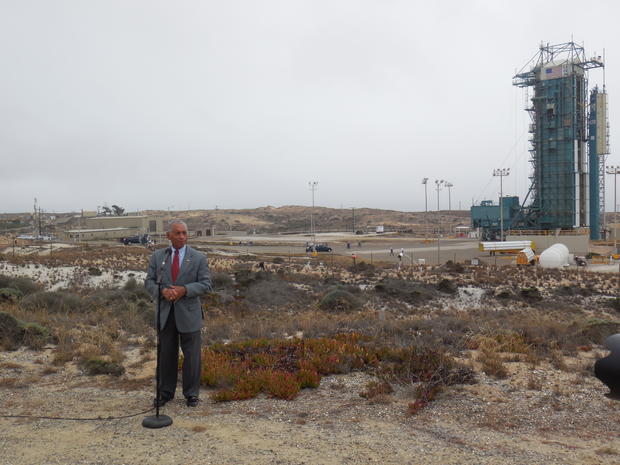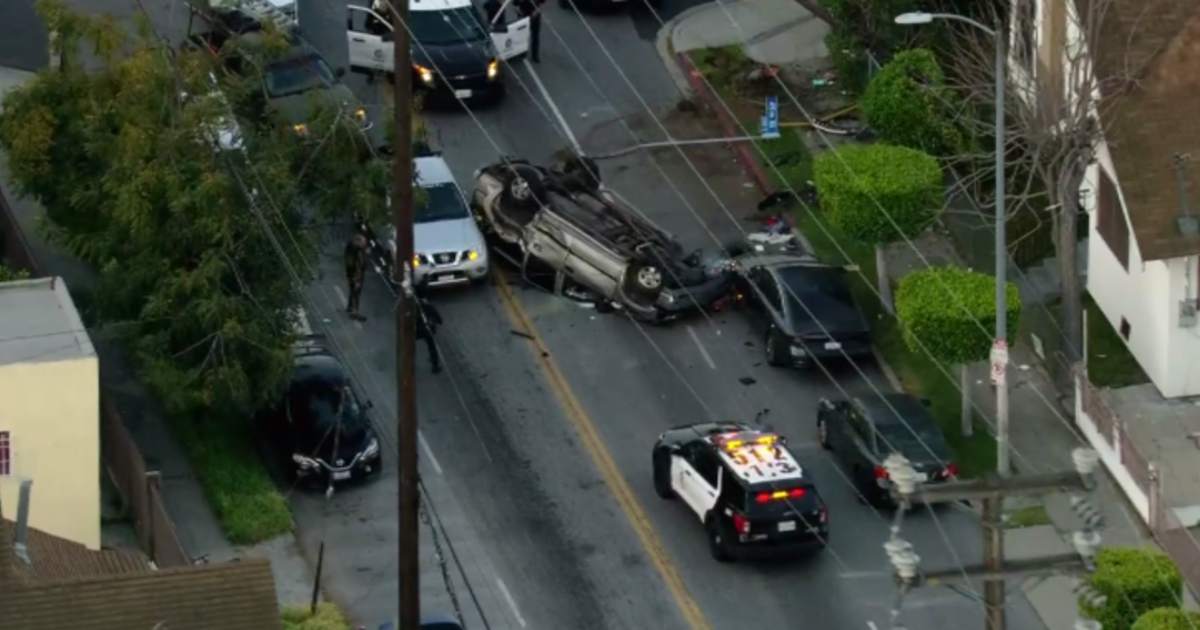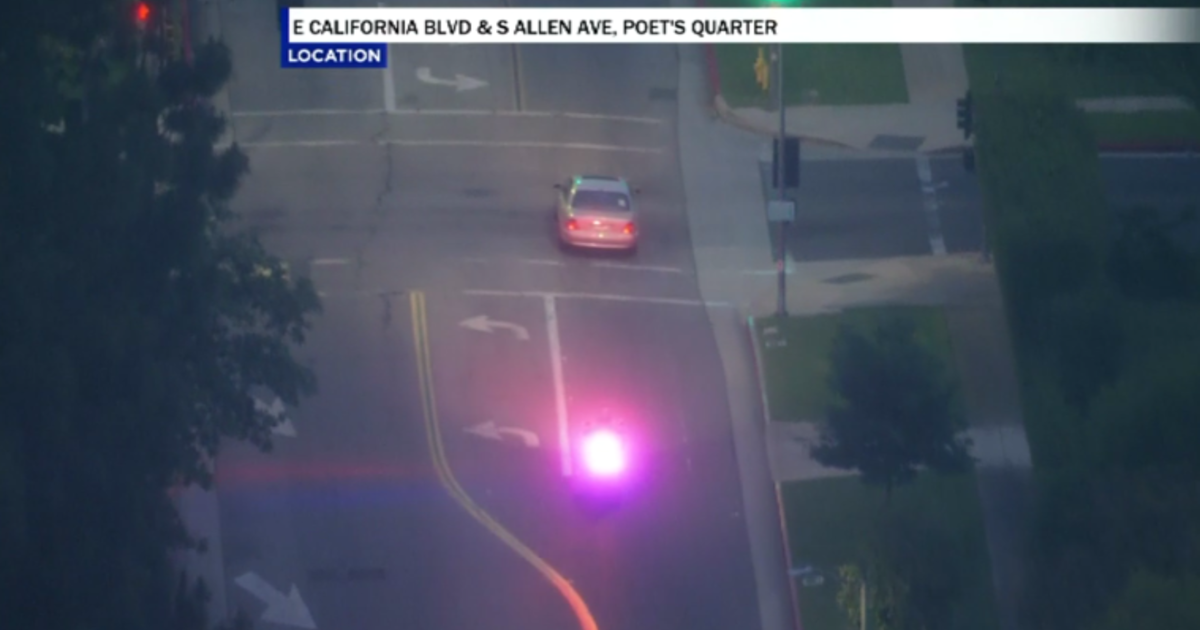NASA Launches Revolutionary OCO-2 Satellite For Climate Study, Avenges 2009 Setback
LOMPOC (CBSLA.com) — "Tonight might be a little more emotional than an engineer is used to."
A balance of excitement, faith and nervousness was apparent in the voice of Mic Woltman, NASA Vehicle System Engineer, as he spoke on the approaching launch of the Orbiting Carbon Observatory, OCO-2, satellite from Vandenberg Air Force Base in Central California on Monday morning.
While most of the public, including observers, space enthusiasts and environmentalists saw the launch as the largest effort to study climate change in human history, NASA saw the launch, which occurred at 2:56 a.m. on Wednesday, as a realization of redemption.
The launch occurred after crews had problem-solved a suppressant water-flow issue, which had caused the launch to be scrubbed from its previously scheduled liftoff 24-hours prior, with just 46 seconds left until liftoff.
"For me, this is a special one, because I was also the vehicle system's engineer for the prior OCO launch," Woltman said. "And so for me, I will be a little emotional this evening when I give my 'Go' to my chief engineer."
The first OCO satellite, meant to study carbon dioxide sinks and patterns on a global level, marked a tremendous setback for many at NASA when it failed to separate from the launch vehicle's payload fairing during its ascent into orbit and crashed into the Indian Ocean in February 2009.
Now, five years later and with a different rocket, the mission is back on its feet, and is finally underway.
"(The satellite) is on a Delta II vehicle, which has a completely different bearing system, and a completely different set system," Woltman said. "Delta II has been a workhorse for us in the launch services program. We're very confident in the Delta II vehicle and all of its systems, and we're very familiar with this vehicle. We've done a lot of work to get to this point."
Of course, the mission itself is too important to have completely forgotten at the bottom of the ocean back in 2009.
As awareness of global climate change increases, one molecule stands out as a primary driver for atmospheric transformation — carbon dioxide.
In the 1960s, about 320 out of every million molecules measured in Earth's atmosphere were carbon dioxide. Today, that number has reportedly increased to 400.
While carbon dioxide is widely accepted as the primary human-produced driver for climate change through the burning of fossil fuels and deforestation, NASA decided to send up the Orbiting Carbon Observatory, a satellite roughly 3 feet by 7 feet, to use thermal telescopic instruments to see what areas of Earth are producing the most.
The rapidity of the increase of carbon dioxide, meanwhile, is something that must be addressed quickly, OCO-2 Deputy Project Scientist Annmarie Eldering said.
"Everything comes down to priorities," Eldering said. "If we decide that we're going to burn through our fossil fuels, with these massive temperature increases, we had better be willing to spend a whole bunch of money to make our infrastructure safe, to make sure we can grow the food we need, to make sure water is available. So, in my mind, for the good of all the people on the planet, the sooner we can cut down on the (carbon) concentrations, the better off we're going to be."
The basic idea is that OCO-2 will provide data to scientists, leaders and lawmakers, to take necessary action on certain areas that may be producing more CO2 than others.
Similarly, OCO-2 will also provide the knowledge of which areas of the planet are absorbing CO2. These areas, including parts of the oceans, lakes and certain vegetation, are called "sinks".
Sinks attempt to provide a natural way to provide balance to the environment by absorbing CO2 out of the atmosphere and storing it.
NASA hopes that OCO-2 will give lawmakers the data they need to make decisions on certain areas to protect, possibly even enhance.
"You think about the conversation at the international level right now, and we want to try to come up with these scheme where countries can say 'This is my carbon emission rate; this is the carbon dioxide that I'm taking up,' " Eldering said. "So, when people are trying to think about this policy, that if we understand better how forests behave, they can do a better job of that kind of analysis."
"In the big picture, the more we can understand how the natural parts of this system play a role, how long they're going to take up that carbon dioxide, and how forests are behaving on a more detailed level, that can be helpful to the folks that are really trying to figure this out."
At Vandenberg Air Force Base on Monday, not far from the launch complex site of Tuesday's anticipated OCO-2 launch, was former astronaut and NASA Director Charles Bolden, who shared that the responsibility of decided what to do after NASA compiles its OCO-2 data ultimately falls on the public and on elected officials.
"(OCO-2) is going to allow us to see information about carbon dioxide — where it's coming from, where it's going, you name it — around the globe," Bolden said. "That will be incredibly valuable, not only to scientists, but to decision-makers, because there are a lot of things, treaty compliance, you name it, that hinge on our knowledge of sources of CO2, and compliance with plans to try to reduce the amount of CO2 emissions in the atmosphere."
Some, meanwhile, worry that OCO-2 confirms that NASA intends to alter their course of study from deeper-space in favor of environmental earth science.
Bolden, however, says NASA's research on atmospheric science has never interfered with its long-range studies.
"We have always had a very strong role, a very key role, in the study of the planet, particularly our atmosphere," Bolden suggested. "I think what you're seeing is an increasing interest on the part of people outside the agency who recognize the value of the data that we provide. And so yes, launching five Earth science satellites in one year in itself says the desire for information, the interest in really understanding our planet, and what we're doing to it and what we can do for it, has heightened."
As for learning from the original OCO setback, and carrying on its legacy, Bolden's sentiments were clear.
"We know how to get our butts kicked, get right back up, and move on."
With Wednesday's successful launch NASA not only provided humanity's largest tool in the study of climate change; they've proved, once again, that anything worth doing is worth the effort to recover from setbacks, which is essentially the theme of OCO-2's study of climate change.
After all, at NASA, a problem is merely a solution, waiting to be discovered.




